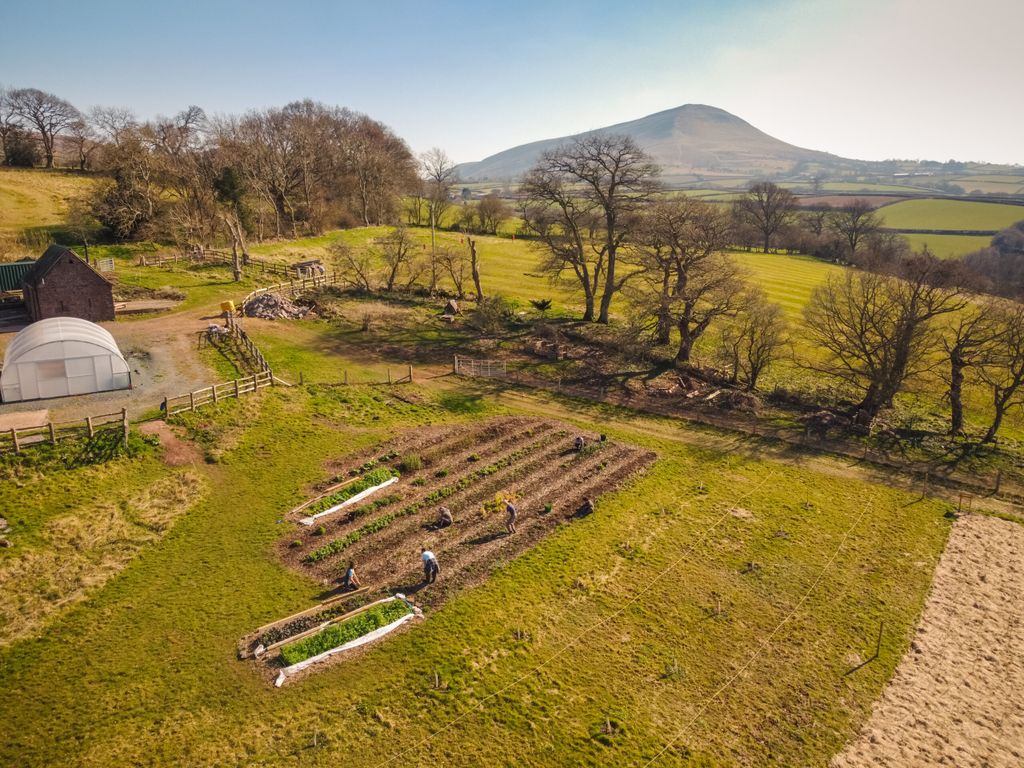William Gold is a research associate at the University of South Wales working on science communication and circular economy for the RICE project and, in his guest blog, examines the role of combustion in a sustainable future.
For over a million years fire has been prevalent in our history, our myths and our legends. We use the language of combustion every day to describe our burning desires and sparks of creativity. It has enabled our biological and technological evolution as first wood and then coal, oil and natural gas cooked our food, lit the night and fueled the industrial revolution. It powers our transport, electricity grids, industry and heating.

We have long been cognizant of the destructive capacity of fire but as its use has proliferated, our awareness of a more insidious threat has grown. Combustion accounts for 80% of human Green House Gas (GHG) emissions and despite the rapid growth in renewable energy generation combustion, still dominates in meeting our insatiable demands for energy. In 2017 fossil fuels provided 94% of the
10000 Mtoe (Million tonnes of oil equivalent, a way of measuring energy) of energy that the world consumed. Combustion, specifically the burning of fossil fuels, has enabled so much for us as a species. Everything you touch, use and do will be influenced in some way by the burning of fuels. But it also poisons our air and is one of the main drivers of global warming. In balancing our way of life against the urgent need for a sustainable future what is the role for combustion? Can we make it sustainable? Do we need to stop? Is quenching the fire even a viable option? There are options but none come without a catch.
Alternative fuels
When burnt fossil fuels release carbon and other products into the atmosphere. These contribute to global climate change and local air pollution. If an alternative could be found that provides the convenience of fossil fuels without the damaging emissions, we could transition to sustainable combustion technologies. The evolution of our fuels has been a quest for increasing energy density, ease of storage, safety and combustion properties. Wood did just fine for much of our history but coal, then oil and then natural gas gained in popularity as our ability to retrieve, refine, transport and burn these fuels evolved. As useful as they are though, our use of fossil fuels is no longer sustainable. As well as their copious contribution to climate change they are finite, current estimates put us at 50 years of reserves for oil and gas and 100 for coal. Climate change data and modelling put those dates much too late if we want to preserve as much as possible of our way of life. Any replacement for fossil fuels would need to approach price parity while offering comparable energy density and ease of storage, transport and use. Ideally without having to completely replace the current extensive infrastructure. In the hunt for such an alternative some options seem to be pulling ahead of the pack: Biomass, biofuels and hydrogen.
Top of the class: Biomass, biofuels and hydrogen
Biomass & Biofuels
Biomass in the context of combustion for power may be wood (often pelletised), rubbish or similar. Biofuels can be produced from the fermentation or anaerobic digestion of biomass, two of the most widely produced are methane and ethanol. Bioethanol, produced mainly from corn in this case, currently forms up to 10% of the petrol pumped on US forecourts. While meeting a lot of the wish list criteria for an alternative fuel, biofuels are not without their controversy:
- The burning of biofuels, and biomass, release GHGs.
- Growing of the feedstock crop is supposed to capture an equivalent amount of carbon to that which is released during its combustion, making the fuel carbon neutral. This isn’t always the case with some accusations of double counting, where figures fail to consider the carbon the site would have captured anyway had it not been used for biofuel cultivation, and failure to account for all the emissions produced during refinement, transport and combustion.
- Biofuels are currently subsidised in many places, so could muscle out less profitable food production leading to food shortages and price increases.
- It encourages agricultural practices such as overuse of chemical fertilisers and monocropping (a profitable but ecologically damaging practice).
Combustion of biofuels can be as efficient and effective as the same fuels produced from oil; we can use it to make jet fuel, diesel or a range of other compounds. It is sustainable in that we have the capacity to regenerate stocks quickly. Biomass tends to be a bit more variable in its composition than biofuel, have a high moisture content and can cause issues in combustion systems such as the formation of various deposits. Variable fuel composition also makes it harder to design efficient furnaces or to predict emissions.
Hydrogen
Hydrogen is very different. It is the most abundant molecule in the Universe, but we usually find it attached to other molecules such as oxygen to form water. This means that in order to use it we need to break those bonds. We can do that with electricity, but this takes a lot of power and if that electricity is not from renewable sources we may not improve our situation. Currently, the vast amount of hydrogen is produced using steam reformation of natural gas, this process produces 9-12 tonnes of CO2 for every tonne of hydrogen, not great for the environment. Hydrogen is an incredibly small molecule; it is lighter than air and very prone to combustion which it does at a very high heat and with an invisible flame. It is energy-dense but by mass rather than volume, this means that it needs to be compressed (pressurised) to be of use.
These characteristics pose some challenges in its safe transportation and use, but these can be managed and already hydrogen is being piped in UK gas grids in trials and hydrogen boilers are in advanced stages of development. When combusted, hydrogen produces water, pure water, as it combines with oxygen in the air. We can also run it through a fuel cell (first invented in Swansea in 1832 by Judge and natural scientist William Grove) to produce electricity potentially making the gas storage network a giant battery. While its dangers are very real it is worth remembering that we already pipe highly combustible gas into millions of homes with few mishaps and that Towns gas, which was used widely throughout the UK and was first burnt in homes in 1792 (a Scottish inventor this time, William Murdoch), is 50% hydrogen.
There are other alternative fuels such as powdered iron which burns cleanly and is not unprecedented (powdered aluminium is used in space rocket boosters) but these are yet to attract the same market penetration.
It is easy to forget how potentially dangerous the gas and electricity and even pressurised water piped into our homes is, but refined engineering has made it safe and commonplace. The real challenge for alternative fuels is in scaling up the production and infrastructure to support their use. Alternative fuels may offer the best transition technology as fossil fuels can be increasingly displaced with sustainable fuels until alternative technologies reach maturity.
What are our options?
Carbon Capture, Utilisation and Storage (CCUS)

This involves capturing the GHG emissions from combustion preventing them from making it into our atmosphere. Once captured they can either be stored, usually in old fossil fuel sites, or used. These gases can be separated using technologies such as Pressure Swing Absorption, purified and sold as chemical feedstocks possibly to go back around the whole process again in a lovely example of the circular economy. Waste gases, along with nitrates which can be harvested from sewage works, can be used to feed algae in bioreactors. These algae can produce chemicals such as acetic acid (vinegar) or even be harvested and dried where they end up as protein which we, or our livestock, can eat. Storing does have its risks but surveys suggest that it should be stable for around a million years if stored correctly, any leak at a major storage site though could have catastrophic results. CCUS technology could perhaps help us transition to renewable fuels, capturing and removing the carbon from the burning of biofuels (which could make them a net negative contributor to GHG emissions) or to make the steam reformation of hydrogen less polluting. If the market for CCUS products can be encouraged then installing the technology could represent a revenue stream rather than merely a cost, this would make it much more attractive.
Replacing Combustion
We could potentially replace combustion completely. After a million years just stop. For transport, cars can be run on batteries, heavy goods vehicles and trains on hydrogen fuel cells and ships on ammonia. Battery powered planes are being trialled but are likely way off yet. Electricity could be produced from renewable sources and many of our industrial processes could replace combustion with technology such as electrolysis and electric arc furnaces. To make this all possible we would have to increase our renewable energy production at least 62% to meet the demand. Our growing energy consumption makes this a moving target. There is also a very significant capital cost. If we can crack plentiful, cheap, green electricity this may represent our best long-term option.
Don’t worry about it

Of course, the cheapest (short term) and the easiest option is to do nothing. Fossil fuel combustion technology, already having reached impressive efficiencies, could be refined further. Combined with new extraction techniques and technologies such as fracking we could extend the predicted reserves past 50 years. Thankfully many companies and governments have heeded the advice from the IPCC, IEA, UKCCC and many others in taking this option off the table preferring pragmatism to disaster.
Conclusion
From the IPCC to BP, industries, scientists and government departments have warned us that we need to change the way that we fuel our civilisation. Change is happening but it is slow. Too slow, as the UKCCC’s recent damning appraisal of the Government’s carbon budget plans show. But change is also hard and the momentum of so many years of investment in combustion installations, infrastructure and research in every corner of the world is hard to pivot. Combustion makes an interesting case study because it is a constant companion in our lives, an enabling process that stretches far into our primal memories.
As for the future of combustion, none of the options listed above offers a silver bullet. But maybe we should not be looking for a silver bullet and instead make progress wherever we can, celebrating that progress while being humbly aware of the miles left to climb. I can see the impressive piece of engineering, the internal combustion engine, being with us for a while yet. Possibly increasingly augmented with exhaust gas circulation and hydrogen injection. For small cars, battery electric vehicles will slowly edge out internal combustion and hydrogen fuel cells for heavy goods vehicles and trains (where electrification is not viable). For shipping, ammonia as a fuel is already making great strides. For industrial processes and power generation, in the short to mid term CCUS will lessen the impact of fossil fuel burning while providing the feedstock for a burgeoning supply chain to the chemicals industry. Electric arc and hydrogen furnaces along with electrolysis will come to replace much of the fossil fuel burning and increased renewables will keep our lights on. We may even live to see nuclear fusion reach maturity, that could be a silver bullet if we can get it to work. I would like to see stricter targets supplemented with support for a market for CCUS products, if the measures plants have to take to lower their emissions can also provide revenue then the payback periods become much more palatable. There is another barrier and that is one of moving goalposts. As the world’s population increases and more of the world seek to raise their standard of living, and with it, their energy demand, the global thirst for energy looks set only to grow. Better energy management would go a long way to helping reduce demand without having too adverse an impact on people’s lives. Energy management is a topic unto itself but by taking every opportunity to conserve energy and intelligently manage demand we can lower our needs and help technologies such as renewable generation become more viable. It is my hope that we find ourselves in a transition period and that the suggestions covered here could allow our legacy systems to run cleaner and more securely while new processes and more intelligent use of energy are implemented to bring us to a more sustainable future.

More like this
-

THE FUTURE IS HEALTHY AND NUTRITIOUS – HERE’S HOW TO MAKE IT HAPPEN
As food security rises on the global agenda, the solution isn’t stockpiling but transforming our…
-

Training for a Changing World
As the challenges facing our natural world grow more complex, the need for skilled, adaptable…
-

Talgarth Talks Community Lectures
Talgarth Talks are monthly public lectures that aim to inspire the ecological imagination, spark fresh…
The BMC Prospectus
Download the Black Mountains College prospectus for an overview of our courses, campuses, and vibrant student life
Visit us
Come along to one of our Discovery Days or Campus Tours to explore our campuses and meet your tutors
